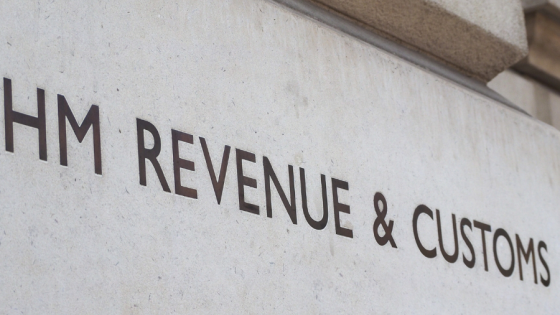Crypto Tax for DeFi – Lending and Staking
8 Feb 2022
If you think the following 10 statements are a work of fiction, you are required to read the rest of this article to see if it’s still unbelievable at the end (hint: only one of the following statements isn’t fact, but read on anyway).
Categories & Tags
- Staking or lending crypto is taxable
- Ending stakes or loans is taxable
- Repaying a loan is taxable (on you)
- Some reward tokens are charged to income tax
- Some reward tokens are charged to capital gains tax
- Future DeFi staking and lending rewards are taxable now (even if you have no idea what the value might be)
- You may need to perform 3 tax calculations and pay tax 3 times on the same tokens
- Collateral provided to borrow tokens is taxable
- Liquidated collateral is taxable
- HMRC are simplifying crypto tax guidance in the UK
HMRC are trying to tackle the world of DeFi and on 2 February 2022, released updated guidance in this regard. It seems this guidance has been in the pipeline for a while, given it was issued 2 days after the tax filing deadline; for once they didn’t want to confuse people, although their new guidance feels rather mis-guided, as well as being extremely complicated, causing chaos in the wider crypto community. Before you completely panic, it would seem these new rules only affect transactions where there is a lending protocol and/or a borrower involved. In other words, if you are staking on protocols such as HEX and REX, or you stake tokens within the same protocol to earn rewards, you shouldn’t be caught.
It seems HMRC have tried hard to understand the intricacies of DeFi Lending and Staking protocols, but this has resulted in ‘death-by-analysis’, with completely impractical taxing solutions now being brought to the table. They have however, given a very clear steer that any staking rewards are not classed as ‘interest’ in the hands of both individuals and companies, but this doesn’t necessarily mean such rewards are not charged to income or corporation tax.
The guidance tries very hard to offer definitions of different types of traders and their activities within the DeFi landscape. It also goes as far as mentioning top protocols such as Aave and Compound, presumably to add some credence to what they are saying. But that’s where it stops. For Lenders (that includes you if you’ve staked tokens) and liquidity providers, it’s where the crypto headache starts.
HMRC advise that the new Lending and Staking guidance applies to 2 types of transactions [CRYTPO61120]:
1. A person (“lender”) transfers the control of tokens to another person (“borrower”). At the time that transfer occurs, the lender acquires a right to demand that the borrower transfers to the lender the control of an equivalent quantity of tokens at a time in the future to satisfy the loan.
2. A person (“liquidity provider”) transfers the control of tokens to a DeFi lending platform. This type of transaction may be termed “staking” or “providing liquidity”. At the time when the transfer occurs, the DeFi lending platform transfers control of one or more different tokens to the liquidity provider.
In both instances, HMRC recognise that the DeFi protocol has the ability to transfer the ‘loaned’ tokens to other persons (“borrowers”) out of the liquidity pool. They go on to state that the borrower will be required to provide a return to the protocol in excess of the principal borrowed. This excess, is then shared with the lender/LP in compensation for providing liquidity. So far so good? Let’s make it a little harder.
Depending on the protocol and its operating model, will then depend on how HMRC would like you to be taxed. A little harder still ……. you may also be carrying on a trade (HMRC views trades as existing only in exceptional circumstances) and be faced with income tax rules, or if not, you may be disposing of tokens, even when you think you are loaning them, and therefore making capital gains.
The guidance goes on to explain different scenarios and what it might mean for your tax headache. The main issue is how they like to deem lending and staking transactions as the individual losing ownership/control of tokens i.e. the DeFi protocol ‘owns’ the lent/staked tokens and can do whatever it likes with them. Essentially, certain loans/stakes should now be regarded as a capital disposal, where other transactions (or part of) may still be regarded as income and subject to income tax. So not only do we need to track hundreds of transactions as within the existing rules, we now need to determine how an individual transaction is ‘structured’ before knowing how to tax it.
Confused? Yet there is more. Periodic returns should be considered against one-off or annual returns. A one-off return is more likely to be treated as a capital receipt, where regular returns are more likely to be income. What if you have set up a staking ladder? Only time and case law will tell. HMRC are also asking you to consider the period of your stake, fixed, infinite, short-term or long-term. What if you end an infinite stake early? You’ve got it, time and case law.
CRYPRO61214 goes at great lengths to discuss the nature of returns and the branches of possible outcomes. In my article ‘Crypto Staking Rewards and Tax Treatment’ I discussed a simpler and fairer way of treating stakes and their returns. This compares staking to sowing seeds, and how the trees of those seeds are only taxed when sold. Interestingly, HMRC’s guidance refers to the case Ryall v Hall [1923] when considering whether a receipt was “profit and gains”, described as “interest or fruit” or “capital accretion”, considered to be “principal or tree”. A simpler and fairer tax system for crypto would deem all staking returns as “accretion” and only tax gains as capital when the principal and returns are sold or exchanged outside of DeFi activity.
An unjust and more complex system
Introducing our new Start of Stake Tax. The guidance makes it clear that where HMRC regard your staked tokens, as having been given to somebody else to control, you are treated as making a chargeable disposal at the time your tokens were staked/lent. The sum you received in calculating your gains depends on more facts! Hold on HODLers, this is where the real fun starts.
If you dispose (stake) tokens with a right to receive a future quantity of tokens, this right is regarded as a deferred consideration. That’s the first step. Step two – is the quantity of these future tokens ascertainable, or unascertainable? Here’s the nasty bit (if you weren’t freaked out enough already). If you know the quantity of your future tokens at the time of staking, you should value them at their sterling value the time the loan is made, giving rise to either a chargeable gain or loss.
What’s that I hear? You want more complexity? You’ve got it. If you stake tokens and earn a return during the staking period, and you can ascertain the quantity of total tokens to be returned, you are required to report any chargeable gains/losses on the date of transfer as above, but also including the return tokens. This means you may have to pay capital gains tax on tokens you have never owned and are yet to receive. Don’t shoot the messenger please.
Unfortunately it doesn’t end there. In some instances, HMRC’s guidance may mean the return tokens should be treated as income, in which case the capital treatment is trumped and when you stake your tokens, you can deduct the notional cost of the future return tokens when calculating your gains. The trade off – when the return tokens are received, you will need to pay income tax, meaning more issues potentially ensue.
Where the future quantity of your return tokens is unknown, you are treated as receiving consideration at the market value of the tokens right at the time they are received. You have also acquired a ‘right’, which is an asset for CGT purposes. HMRC will almost always consider the principal stake to be known, so this part should form part of a separate calculation at the point of stake or lending. You are then expected to calculate the market value of the return tokens (your ‘right’ asset) and include that in your disposal calculation at the point of stake. In the real world, it’s highly unlikely that anyone will even think about doing this, let alone finding a way to fairly value the market value of a future right to return tokens.
In the situation where you receive liquidity tokens in return for staking or lending, you are treated as acquiring the LT’s at the total market value of the staked token(s). More record keeping, as you will need to report any chargeable gains/losses when you receive your staked tokens back (more below on this).
A Borrower’s perspective
It’s usual in DeFi for loans to be collateralised in the form of staking another token with the protocol before being allowed to borrow another token. Where the DeFi protocol is able to do as it wishes with the tokens received as collateral, HMRC consider the borrower to have made a disposal of their ownership of those tokens. By now you will realise what this means; the market value of the collateral tokens on the day of ‘disposal’ are used in calculating any gains or losses.
When you recall your collateral tokens, you are treated as buying them back at their market value on the day of the transaction and just for safe measures, you when sell or exchange them, you will have another capital gain/loss to report!
In some instances, it may be the case that you don’t lose ownership of the tokens when they are staked as collateral. When the tokens are withdrawn from the DeFi protocol, there are no capital gains consequences, as they were always in your control. But what happens when loan collateral tokens are liquidated?
HMRC’s updated guidance now treats the liquidation of your staked tokens as a disposal for capital gains tax purposes. This means, when the markets work against you and the value of your borrowed tokens fall, you could be faced with a chargeable gain on the market value of the liquidated tokens. This is because HMRC consider the protocol to be acting as your nominee. Anything they do, they do it for you. The same applies to any other activity the protocol performs on your behalf. In other words, any gains or losses occurring on the collateral tokens when under the management of the protocol, are treated as yours. I can almost hear the keyboards bashing as the coders of crypto tax apps work day and night until their software is compliant again.
Repayment of a Loan and Withdrawal of a Stake
So what really happens when a loan is repaid or you un-stake your liquidity tokens?
When a borrower repays a loan, they are now treated as disposing of any beneficial ownership over the tokens back to the lender. HMRC would like to borrower to treat this as a disposal of the tokens, computing any chargeable gains or losses arising. The disposal proceeds are the market value of the tokens on the day of repayment, including any return tokens, with their cost being their market value on the day they had been received from the lender.
HMRC state, “Where a person borrows tokens, they are making an acquisition. When a borrower enters into a loan agreement, they are giving a promise to the lender that they will do something: they will transfer a quantity of tokens to the lender in the future. In the High Court case of Chaney v Watkis (58 TC 707), it was found that an obligation to do something was “money’s worth” and capable of being expenditure. This means that the value of the borrower’s obligation to transfer a quantity of tokens to the lender in the future will be the acquisition cost of the tokens borrowed”
If you lend tokens, as discussed earlier in this article, there may be some immediate tax consequences. In the instance where the future quantity of tokens is known, when the borrower repays the loan, the tokens received by you are a capital sum, and you are treated as making a capital disposal, for receiving something back you thought was yours in the first place! They are allowing you an acquisition cost however, which is the market value of the tokens on the day you originally staked or lent them i.e. the amount you have already reported as a gain/loss.
This poses a big question. These rules basically mimic what would have happened to the lender had they simply held their tokens in their wallet in the first place and sold them at a later date. In other words, the disposal by the lender on receipt of the tokens from the borrower reflects any change in value of those tokens during the course of the loan. It seems whoever advised HMRC in writing the updated guidance believe most of us have one transaction a year, to one person, with one whole token. The introduction of this guidance is a definite facepalm moment in the crypto community.
In some cases, where an asset is sold for a deferred consideration, there are at least two, maybe three separate disposals, each with its own tax implications. HMRC are keen to point this out in their guidance [CRYTPO61650].
Where the lender does not know the future quantity of tokens to be received, as discussed above, a ‘right’ has been acquired. The market value of the right should now be included in a disposal calculation at the point of stake/lending. The same rules apply as above, in that when the borrower repays the loan, the lender is treated as having made a disposal. The only difference this time, is the market value of the right should be included as the acquisition cost. It should be noted, if this computation produces a loss, it may be possible to elect to offset it against the any gains made when staking/lending.
In the situation where you have transferred control of your tokens to a protocol in return for other protocol tokens, when you wish to withdraw your staked tokens, you are treated as having disposed of your protocol tokens, whilst acquiring your original tokens back. This is regarded as a normal exchange transaction, so yet again, you will be required to calculate and report any gains or losses. The disposal proceeds are the market value in sterling of the tokens received from the DeFi protocol.
Treatment where a trade is carried on
If an individual is considered to be carrying on a trade involving the making of DeFi loans/staking, then the activity that falls within the scope of that trade will be subject to Income Tax, which will take priority over Capital Gains Tax and apply to the profits (or losses) of the trade.
If there is a trade involving crypto assets, those assets may potentially be held as either trading stock or as investment assets outside of the trade. Consideration will need to be given as to whether there have been any appropriations to or from trading stock, which will have tax consequences.
Where does this leave us? It certainly feels like many steps backwards, with HMRC over-complicating (possibly intentionally) crypto tax guidance within DeFi, creating a huge problem for themselves in policing the every-growing crypto community. Not only this, they are stifling innovation and our freedoms to enjoy a decentralised financial world in a simple and fair way. There’s no doubt HMRC have one eye on taxing the protocol DAOs as well, but that’s another story for another day.
News & Resources

Accessing the HMRC mobile APP

Investors’ Relief guidance

Tax-free mileage expenses

More about emergency tax codes

Entitlement to carer’s allowance

Invest and save tax

Still time to register for the Marriage Allowance

